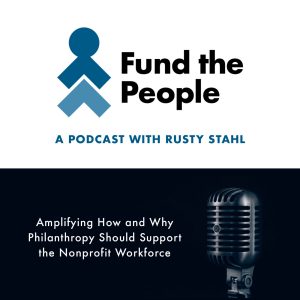Strategy most often fails in implementation. With all the effort that went into developing your new strategy and writing your strategic plan, the hardest part is making the darn thing work!
Donors, foundations and corporate giving programs should have a clear, agile strategy to determine the impact they want to have in the next 12 months and guide decision-making. Too often, however, their new strategy doesn’t even get off the ground. Here are the five most common reasons for this:
- You are exhausted. If you are like most foundations and philanthropists, you have spent WAY too long developing your strategy. Endless meetings, environmental scans, self-assessments, board assessments, finding and engaging a small army of content experts, writing and re-writing the perfect strategic plan document (complete with beautiful graphics and theories of change). You probably spent more time crafting the RFP to hire a strategic planning consultant, reviewing their proposals, interviewing them, and hiring them than you needed to spend developing your strategy! Now that you have your beautifully written plan up on your website, you and your team are so exhausted that the last thing you want to do is figure out how to implement it. Not to mention, you are likely behind in everything else at work: a backlog of unread emails, meetings you’ve put off, and a pile of proposals to read.
- You want to create the perfect “implementation plan.” Now that you’ve spent WAY too long developing your strategic plan, you decide you should put that same amount of time and effort developing an implementation plan. Perhaps you are setting aside a quarter or a whole year to figure out how you will implement it (before actually implementing it). You envision another shiny deliverable at the end of this: a beautifully organized implementation plan document that outlines every goal, tactic and activity, lists who is responsible for each of them, and spells out in which month or week it will occur.
- You get distracted. Ideally your strategy should be your north star. It should be a tool you use to determine your top priorities and your path forward. As new opportunities appear on your doorstep, you can compare them against your new strategy to determine if the opportunity will help you achieve your strategic goals or take you off course. But you don’t even get that far. The ink has barely dried on your strategic plan and you are off and running, chasing the latest philanthropic squirrel: a president is unexpectedly elected and you decide this changes everything you’ve worked on in the past year, a new initiative is being developed in your community and you want to be part of it (despite the fact that its addressing an issue that’s not part of your strategy), the policy environment is shifting in your state and you decide to focus on policy advocacy instead.
- You assume everyone knows what to do. They were all involved in the planning process, so they should know their next steps, right? Wrong. Your new strategy likely represents new priorities and a new way of doing business. While everyone says they like change and understand change is inevitable, they don’t like it when that means THEY need to change! What happens here is everyone goes off and does their own thing. This is likely whatever happens to be scheduled on their calendar for the next few weeks and months. Or, they might focus on their small piece of the new strategy, reinforcing the silos that you hoped your new strategic plan would break down. This leads me to the last and most important problem.
- You don’t have clarity on your top implementation priorities. In all my time advising funders to formulate and implement their strategies, the biggest problem with implementation (and the easiest one to fix) is that you haven’t identified your top 3-4 implementation priorities. What are the three or four most important things that need to happen first? That’s what you need to focus on. Not what each person’s or each program area’s top priorities are. I’m talking about the top priorities for your entire organization, whether you are a family, a foundation, a donor advised fund or a corporate giving program. Everyone needs to know what these are, who is accountable for them, and what their own role is in addressing that priority. What happens instead is that the CEO is clear on what he or she thinks are the top priorities and assumes everyone else knows them too. But they don’t. I know this because every time I help funders with strategy implementation, I interview everyone involved. I ask them, “What are the top three priorities for implementing your new strategic plan?” The last time I did this, the staff collectively identified 26 “top” priorities!
What to do about it
Now that you know WHY your strategic plan failed or never took off, I bet you’d like to know WHAT you can do about it! Stay tuned and in January, I will share the 10 rules for successful strategy implementation.
Whether you are just getting started in philanthropy, want to refresh your giving strategy, or need to catapult yourself to your desired future, I can help. Call me at +1-800-598-2102 x1, email me at kris@putnam-consulting.com or schedule a call.
If you need help implementing any of these ideas, let’s talk!
You can email me, call me at +1.800.598.2102, or schedule a call.
Navigate the unknown with confidence!
This free download will help you create a powerful giving plan in radically uncertain times.
So many funders I talk to lately are feeling overwhelmed (and exhausted) because conditions keep changing and it’s hard to plan for an unknown future. But while the future is uncertain, we don’t have to be. You can’t afford to “wait and see.” With these practical how-tos, you can pivot with purpose!
Want to learn about the biggest self-created challenge facing philanthropists? Listen to my latest interview with Rusty Stahl on his Fund The People Podcast!
In this episode, we explore the scarcity mind-set inside organized philanthropy itself as a major source of the deficit of investment in the nonprofit workforce.









